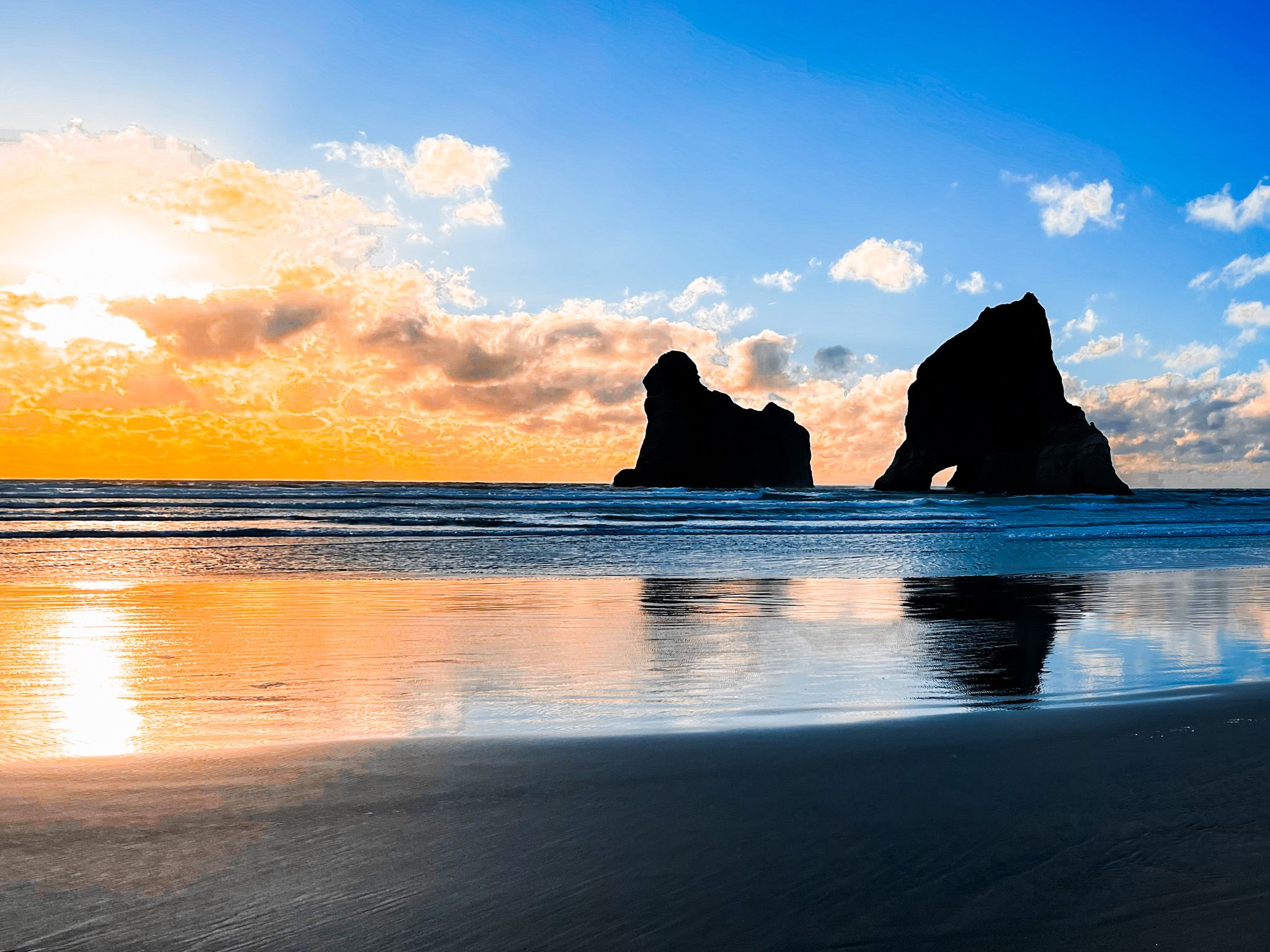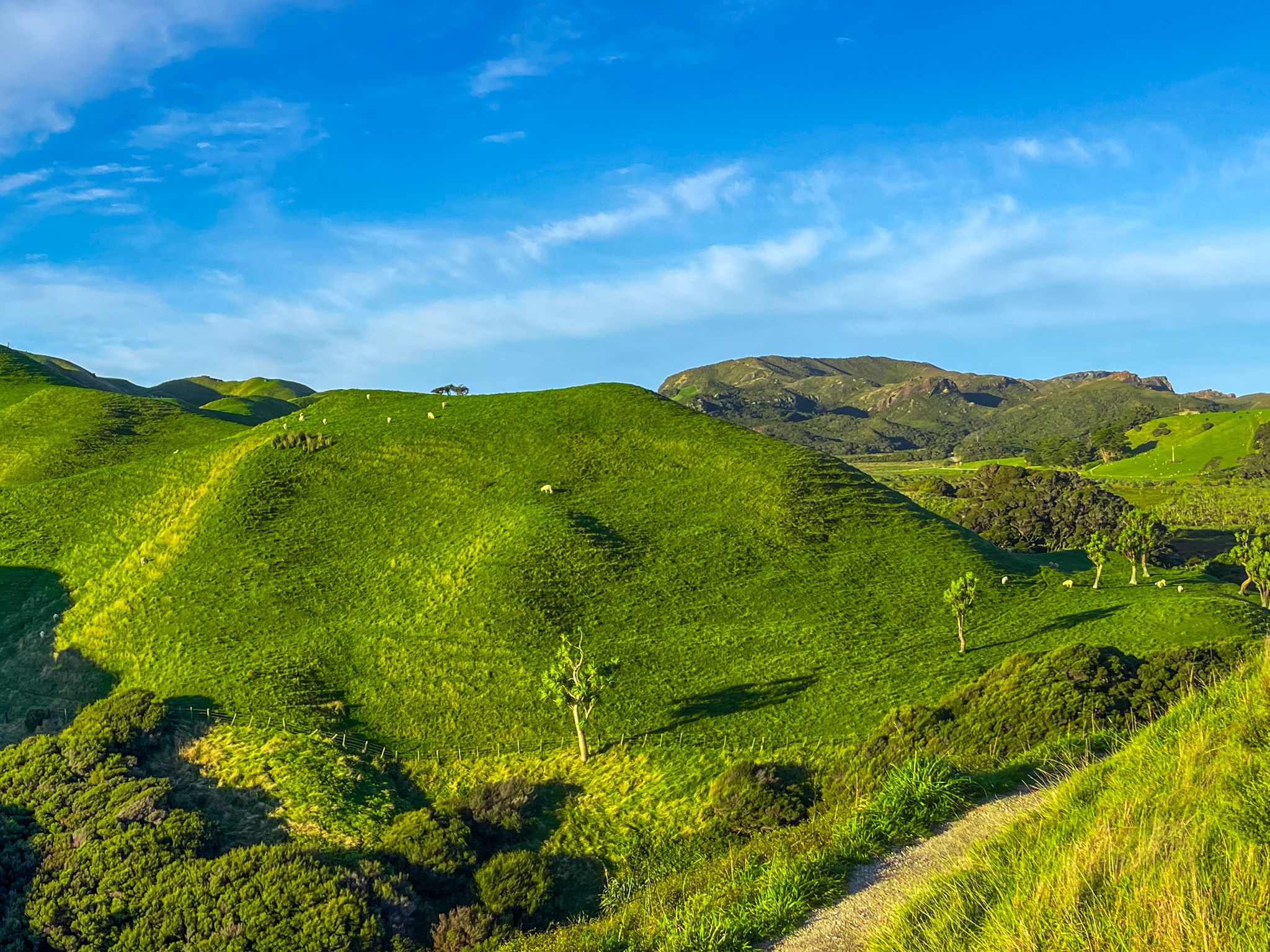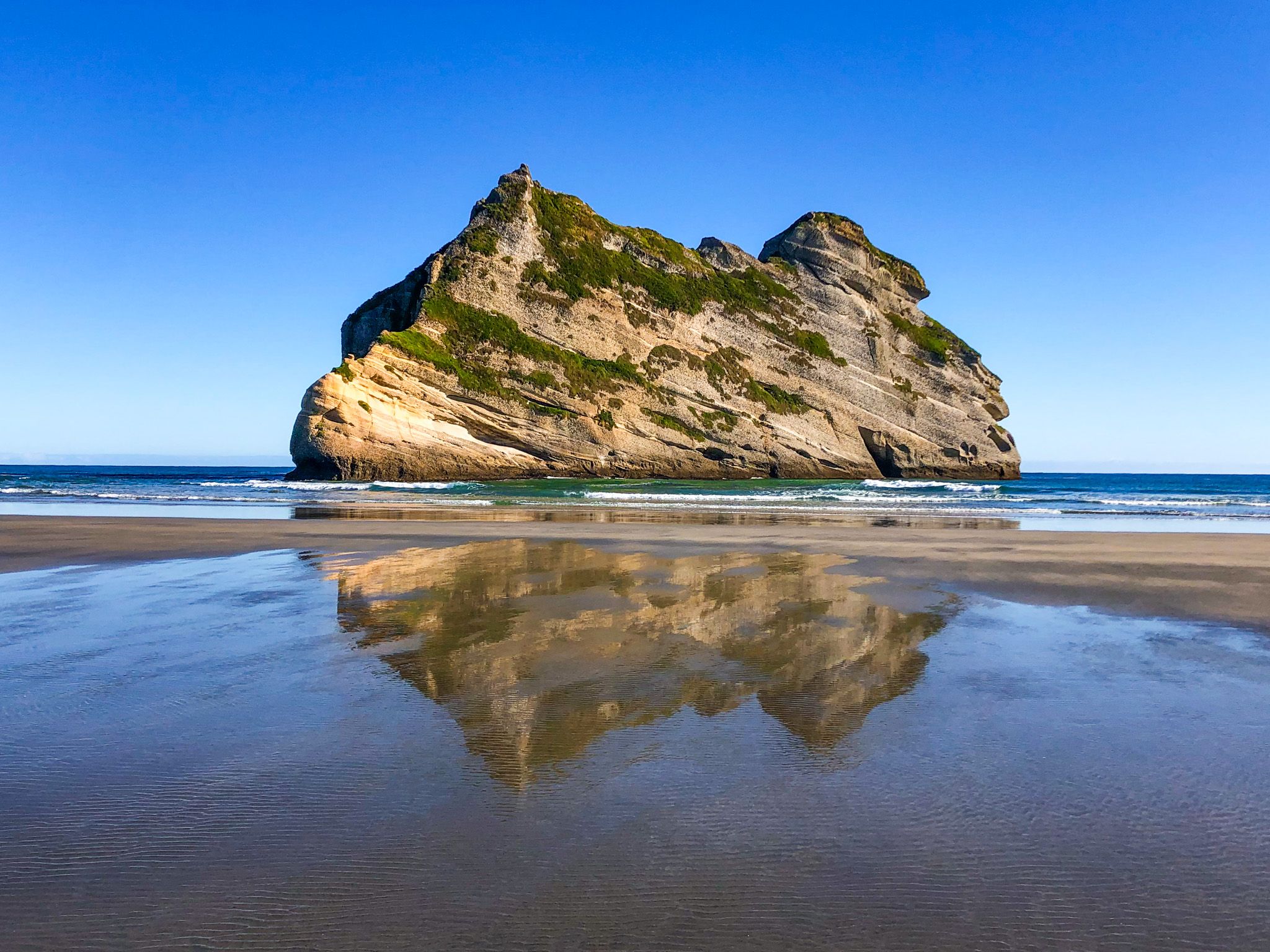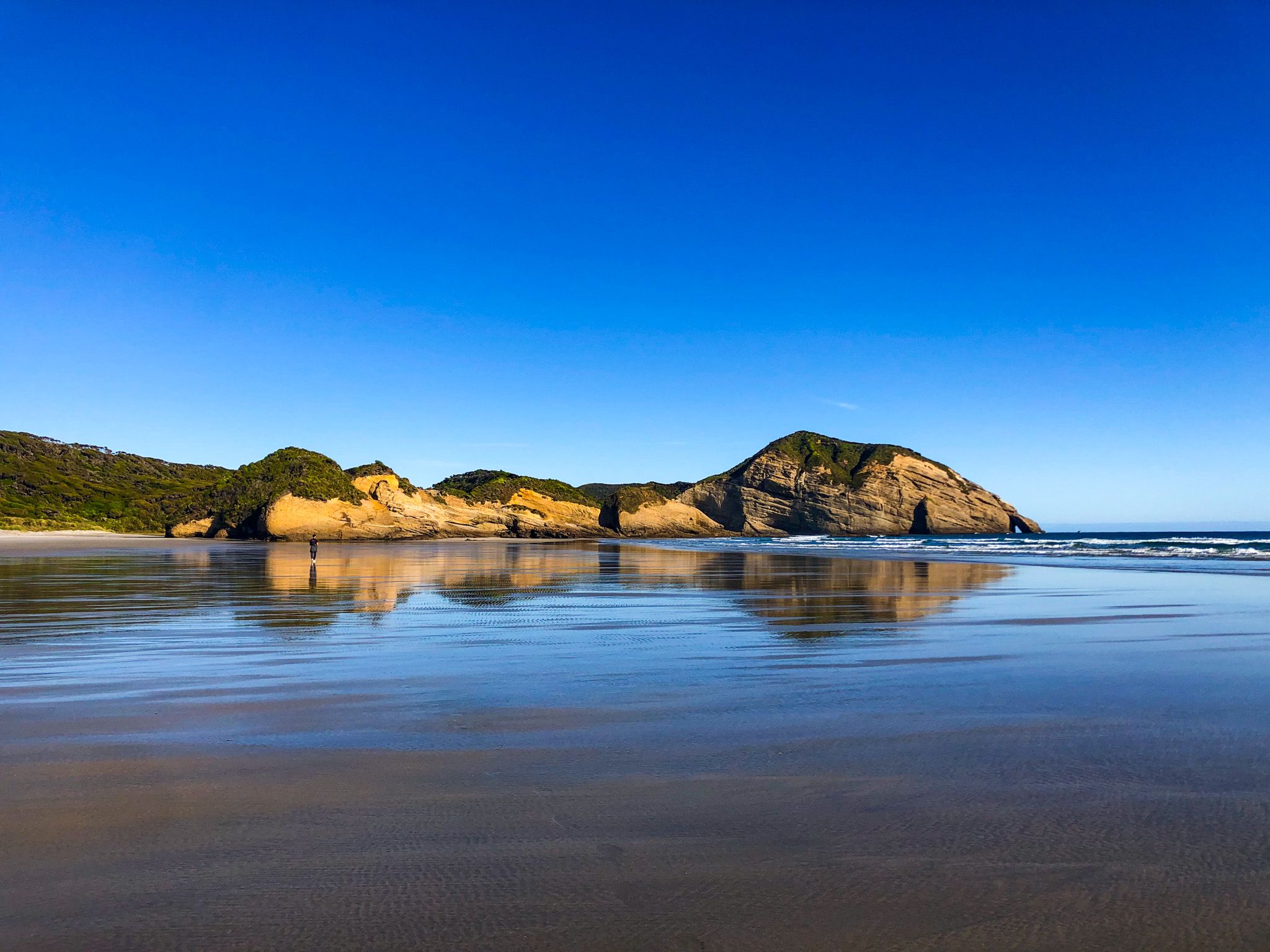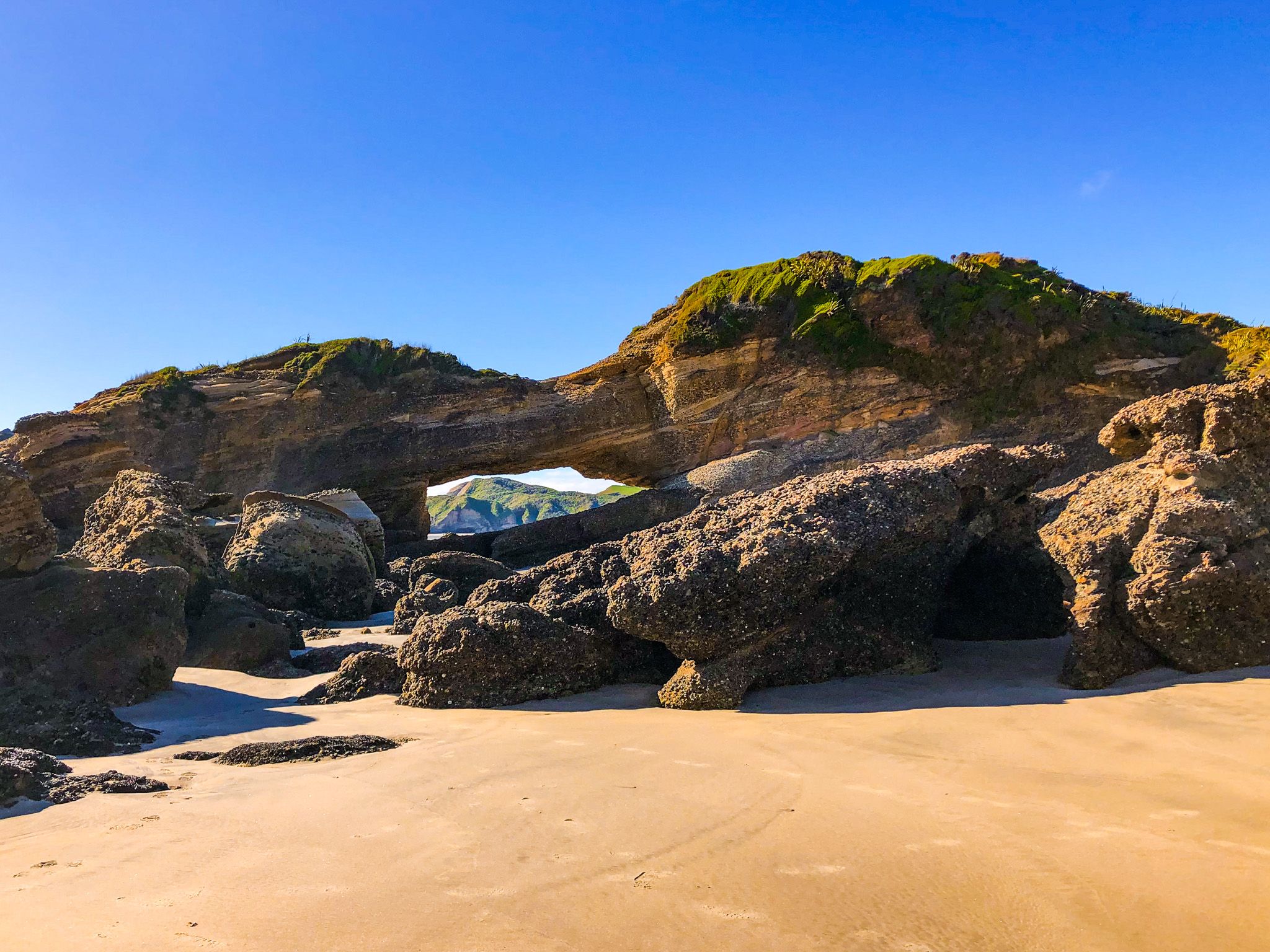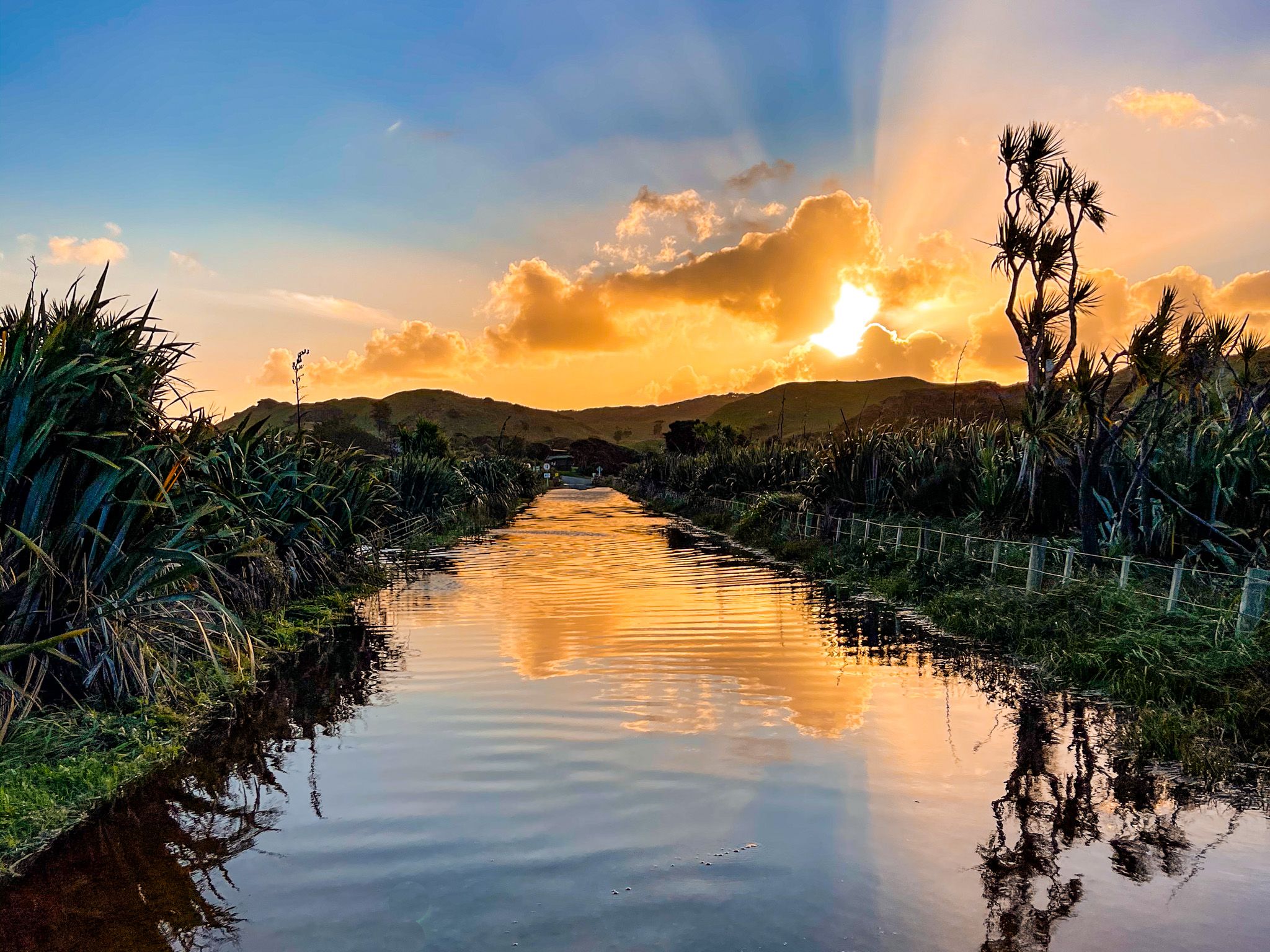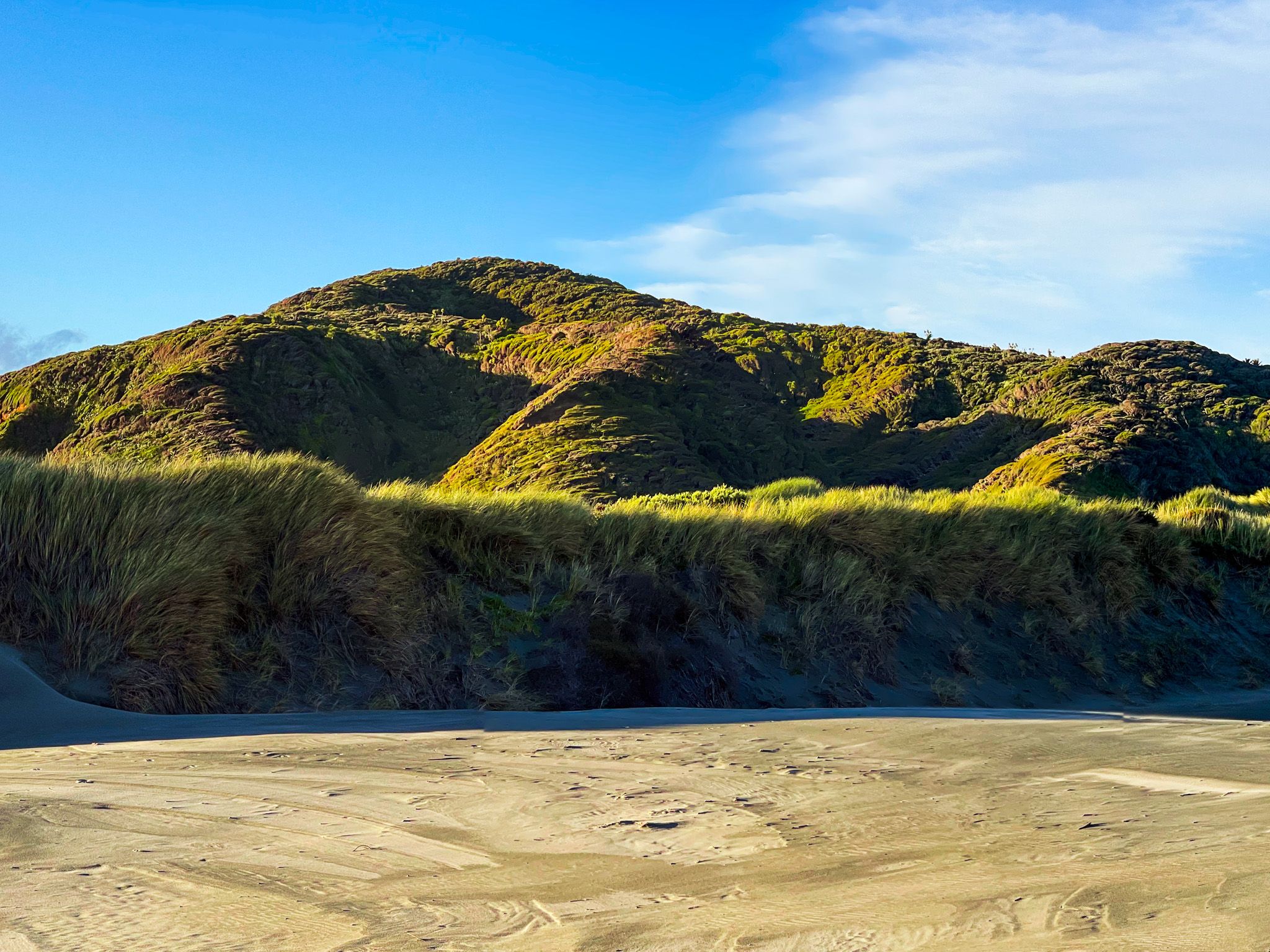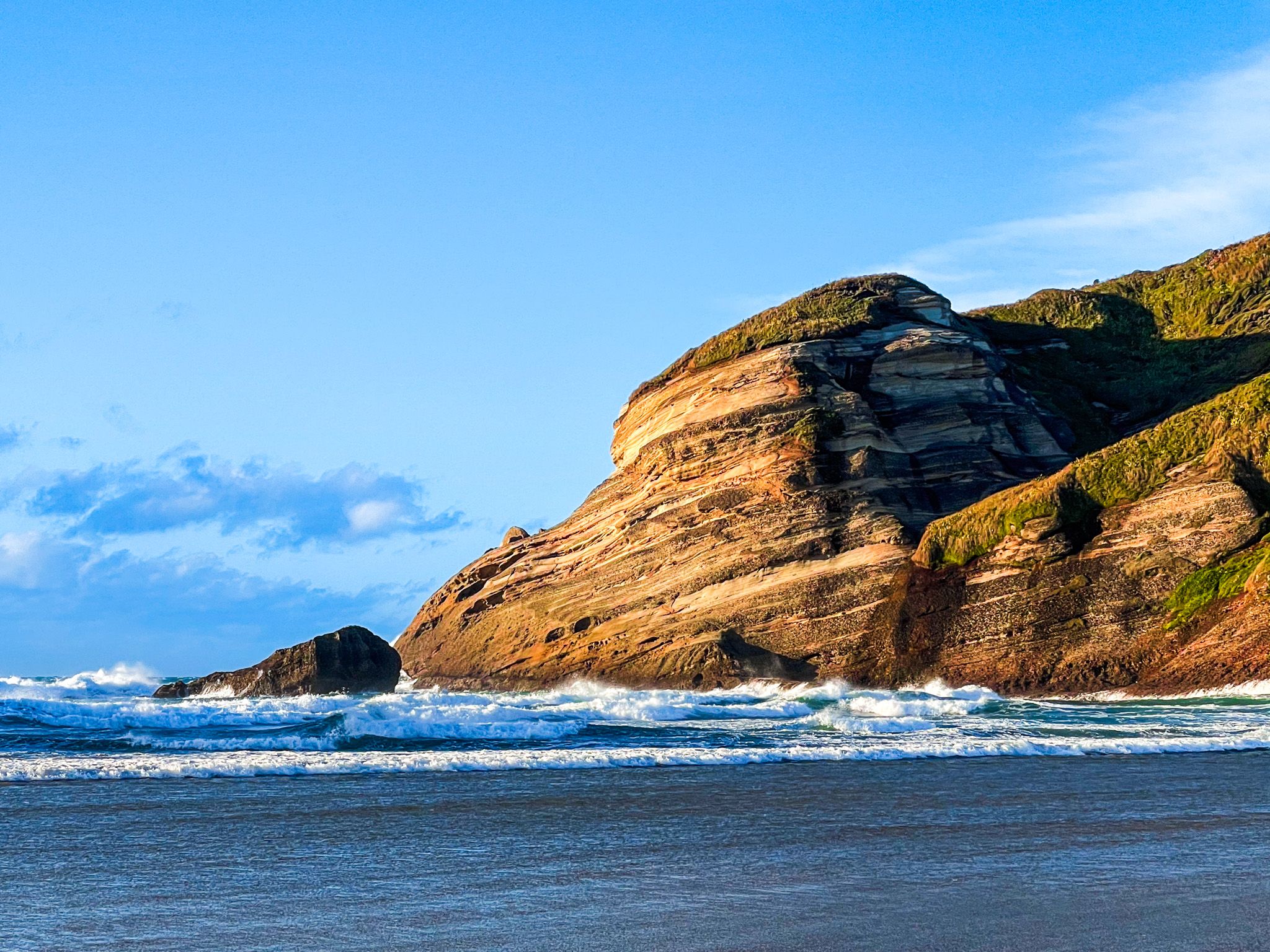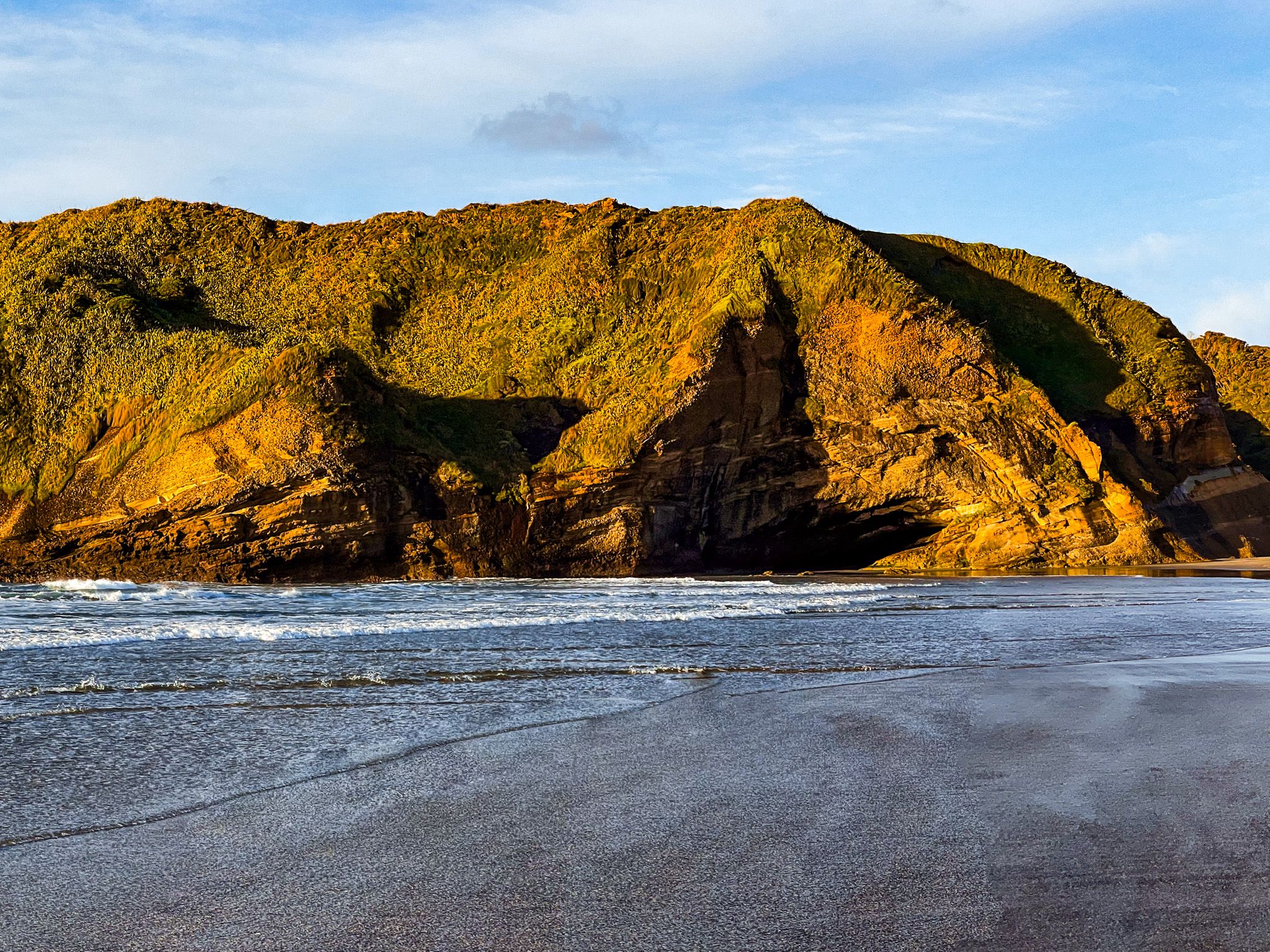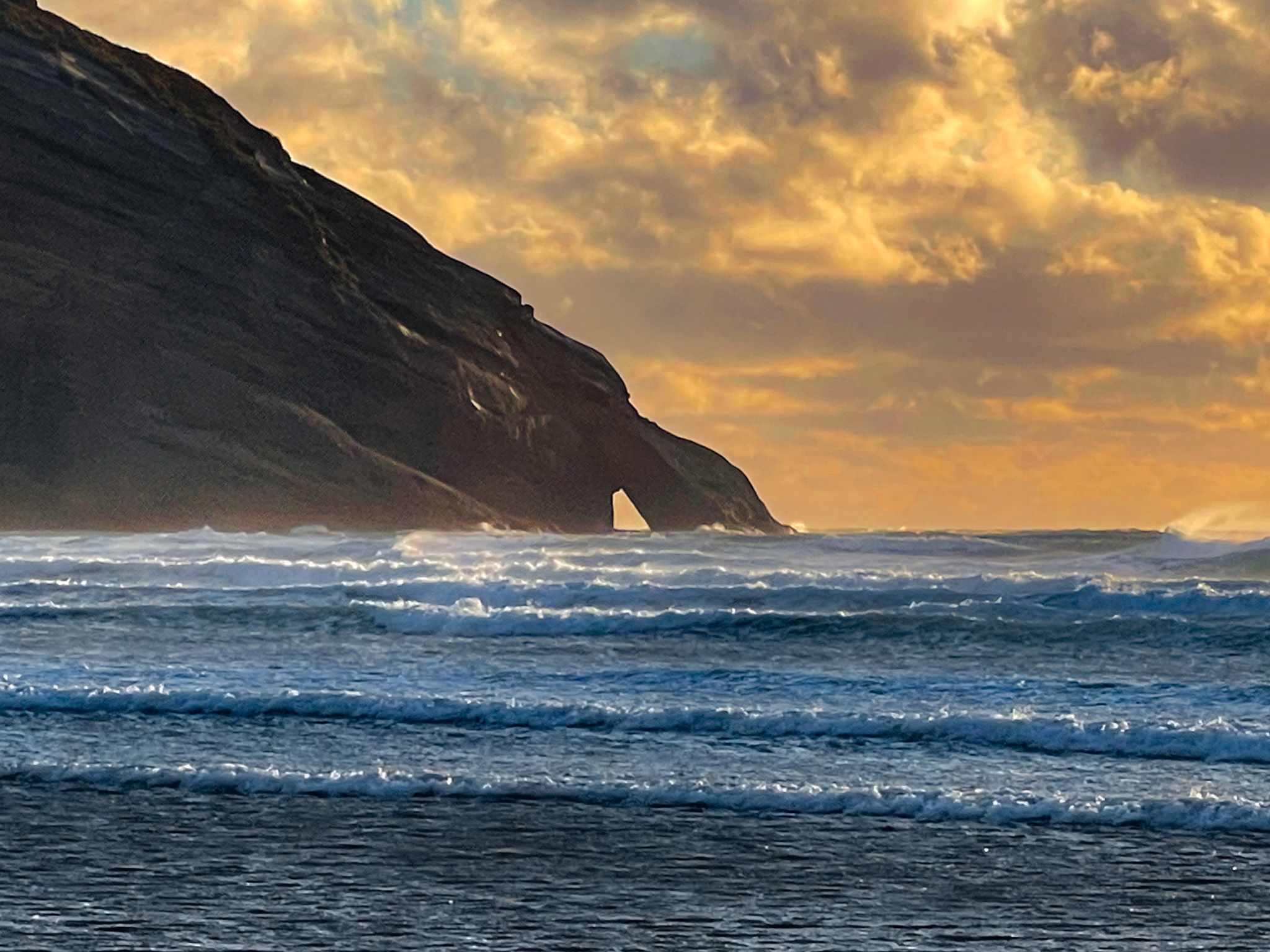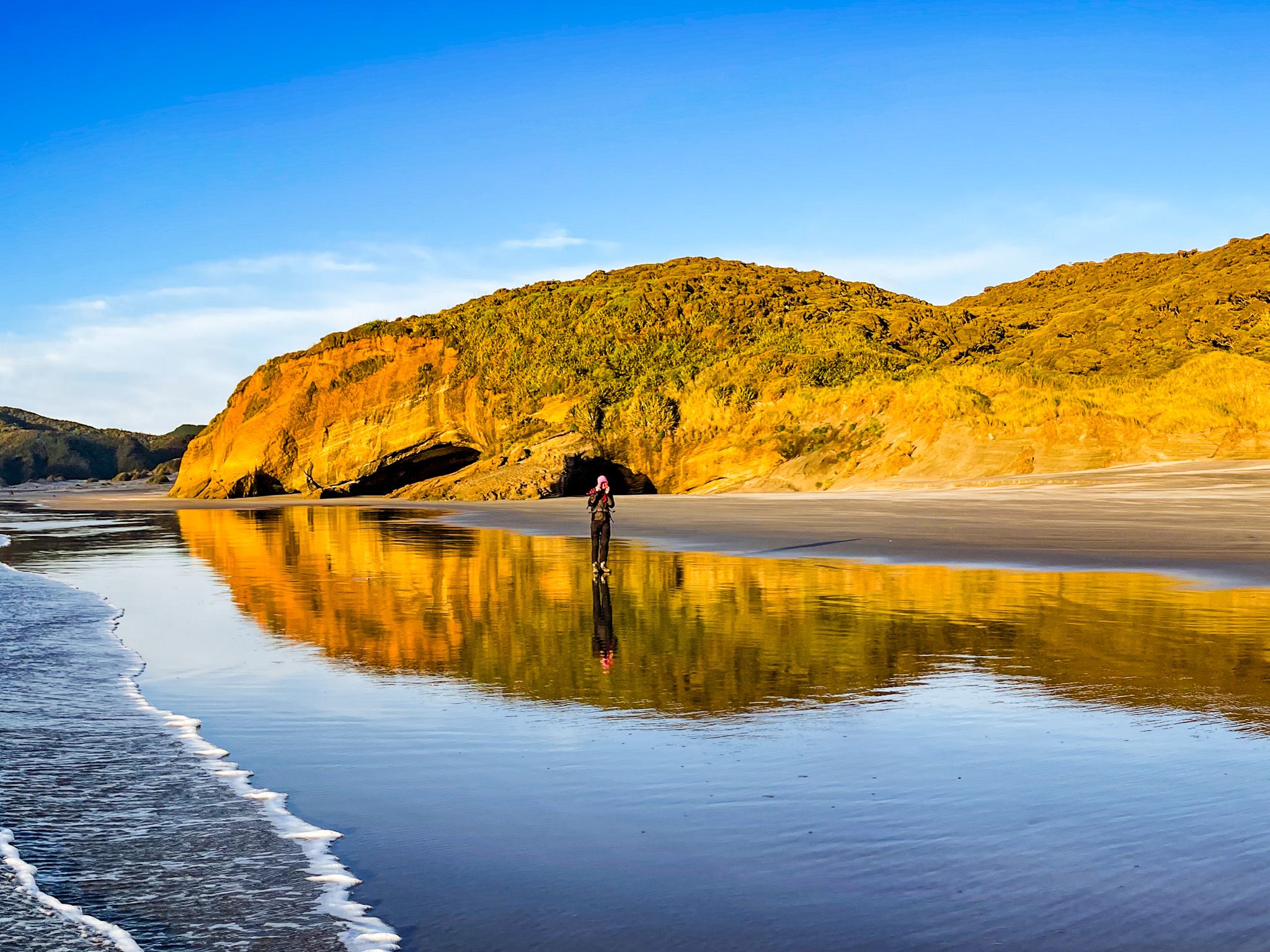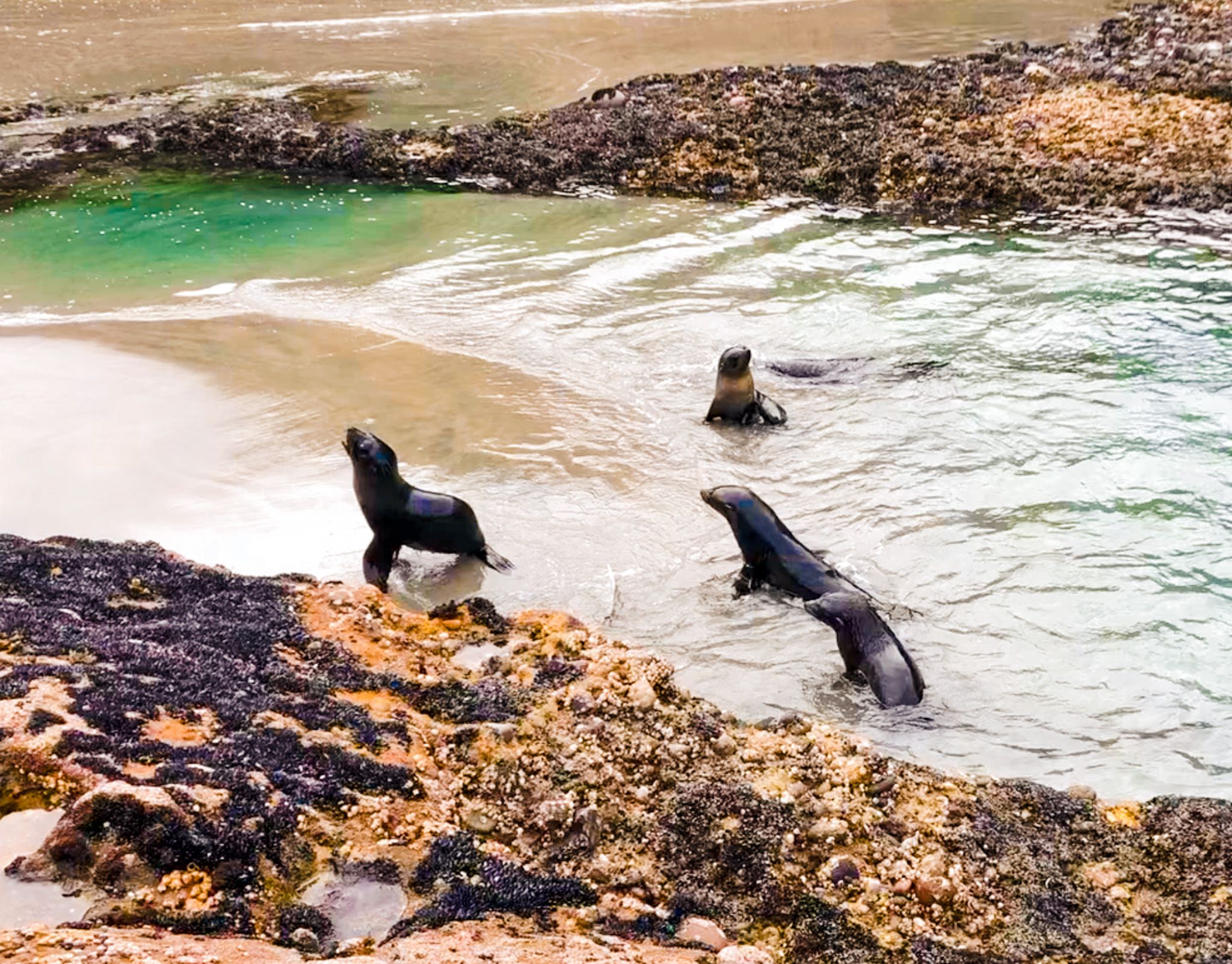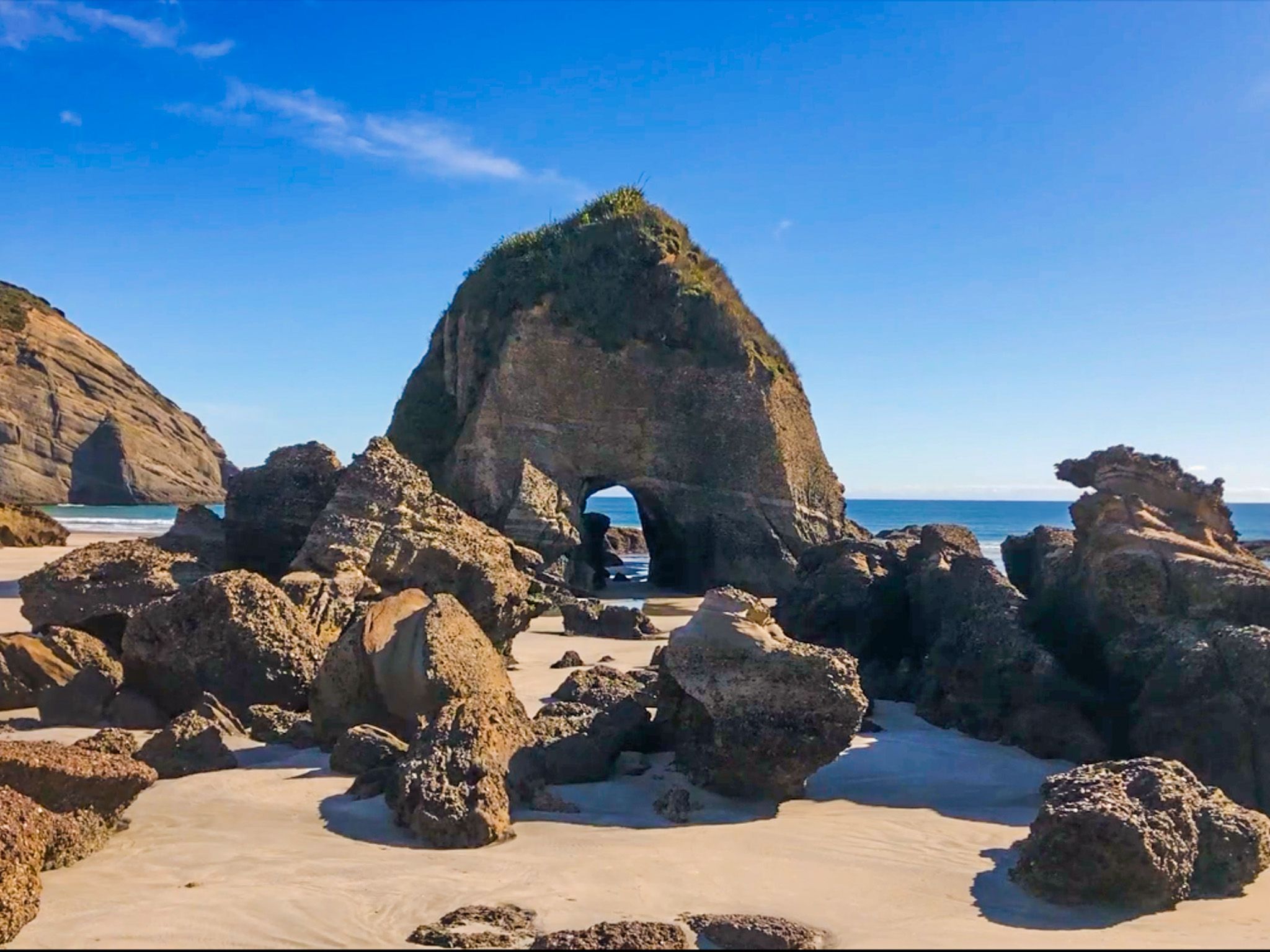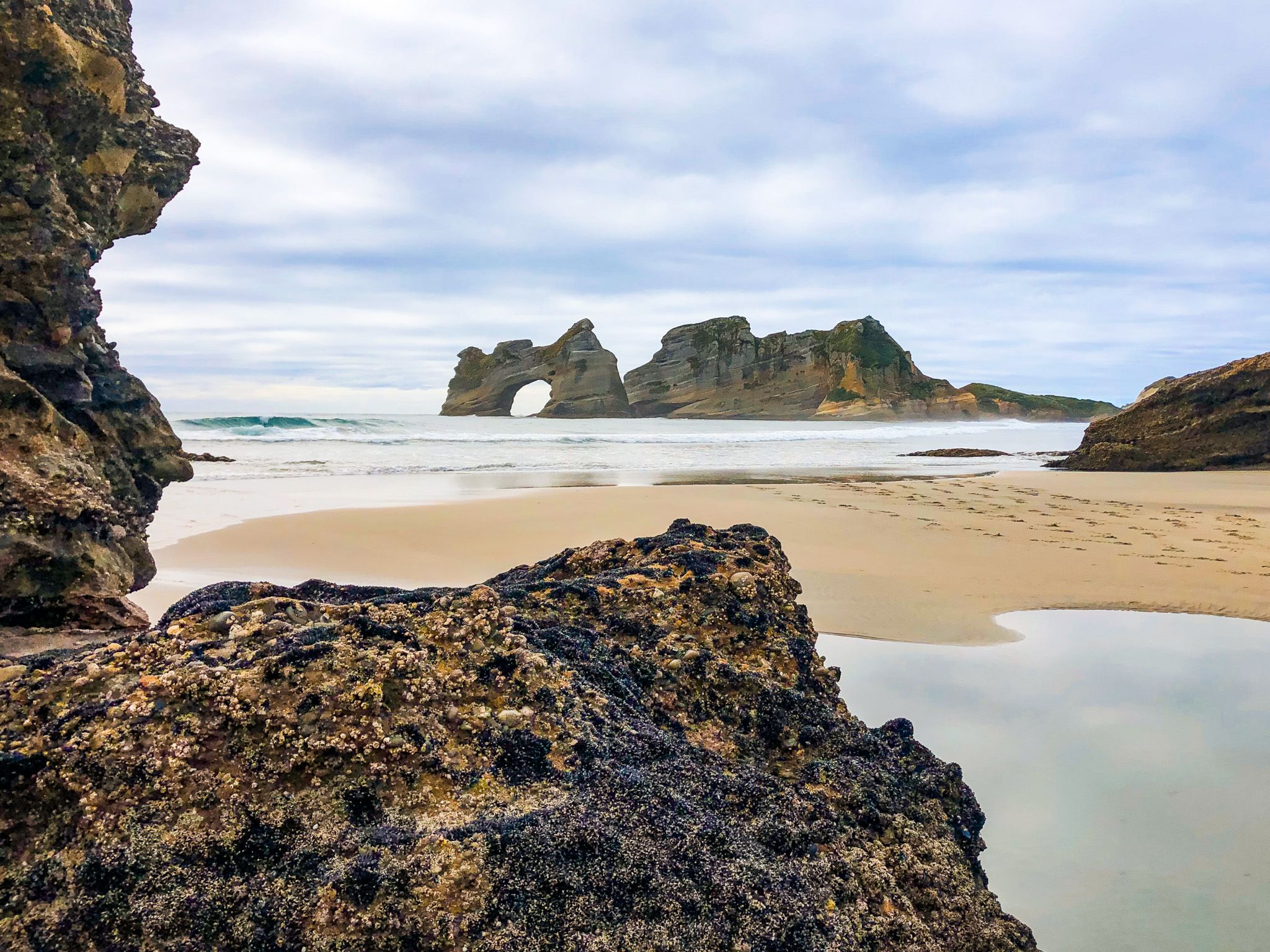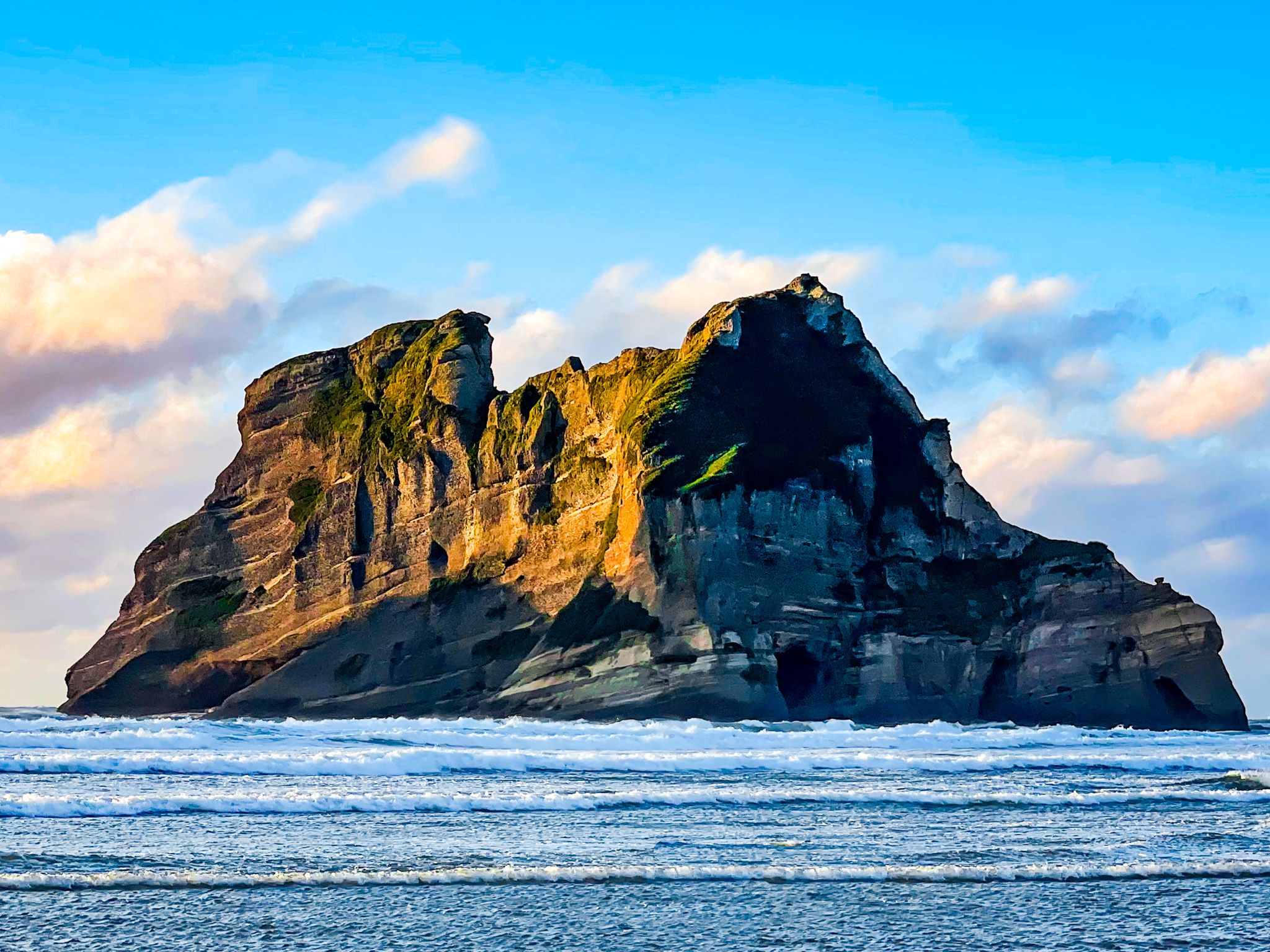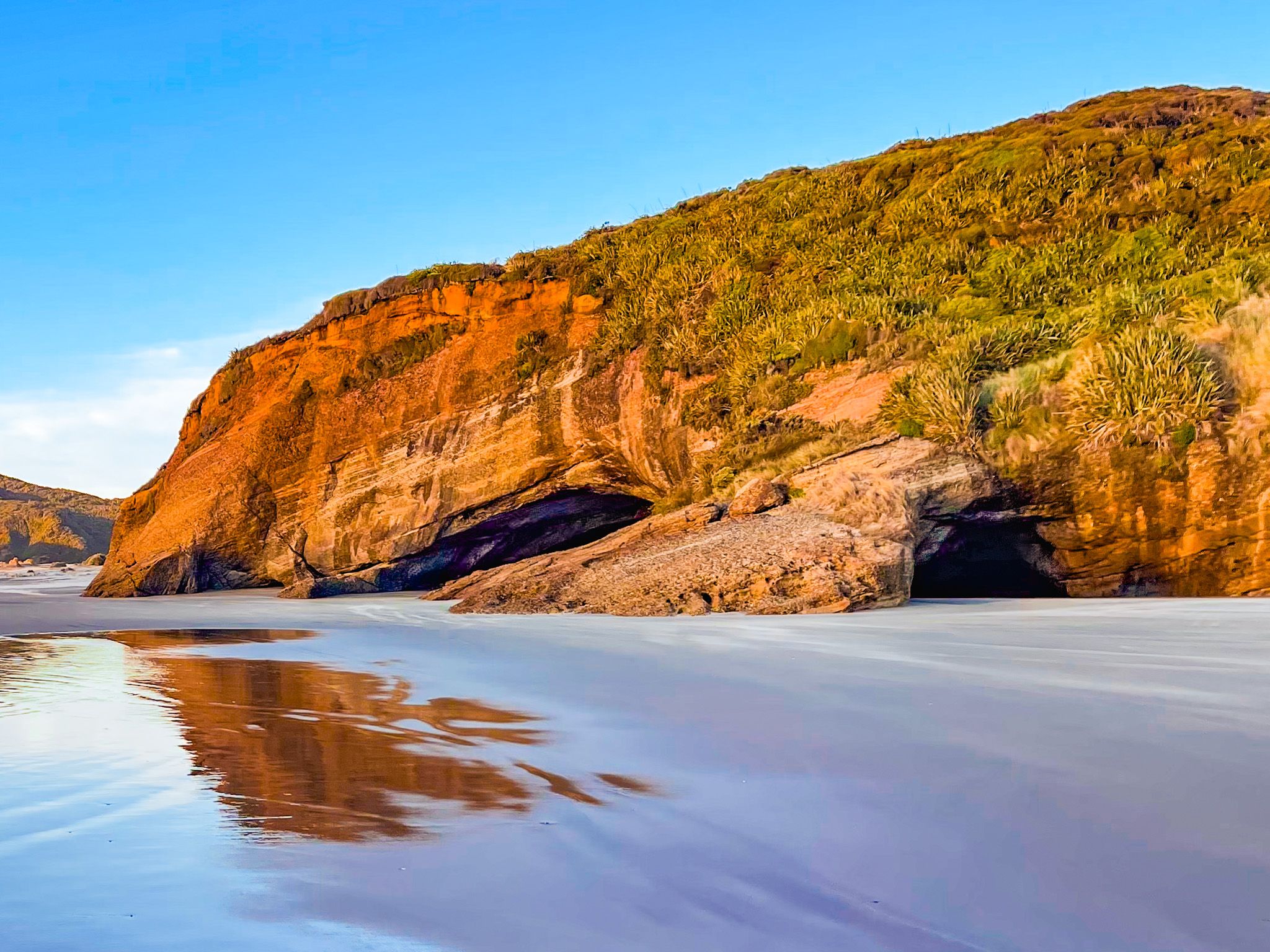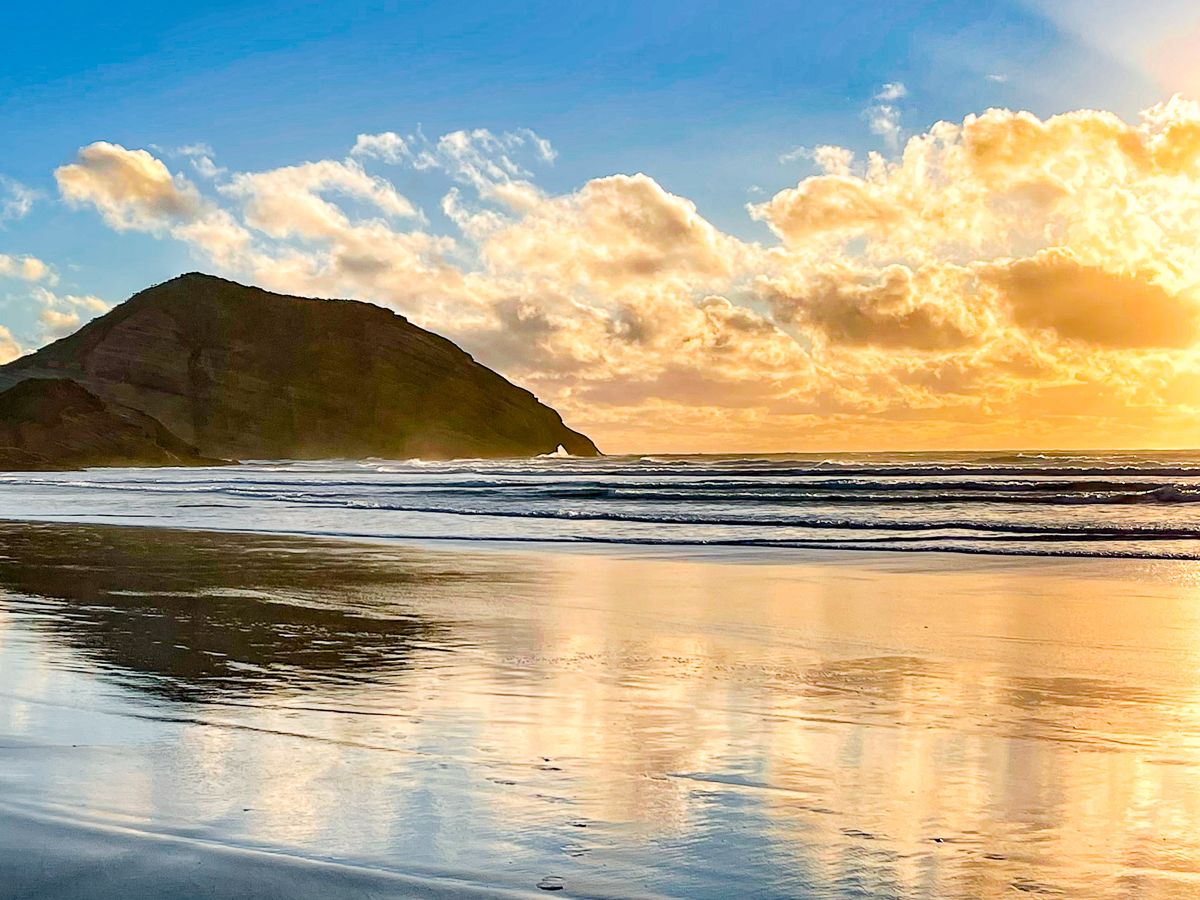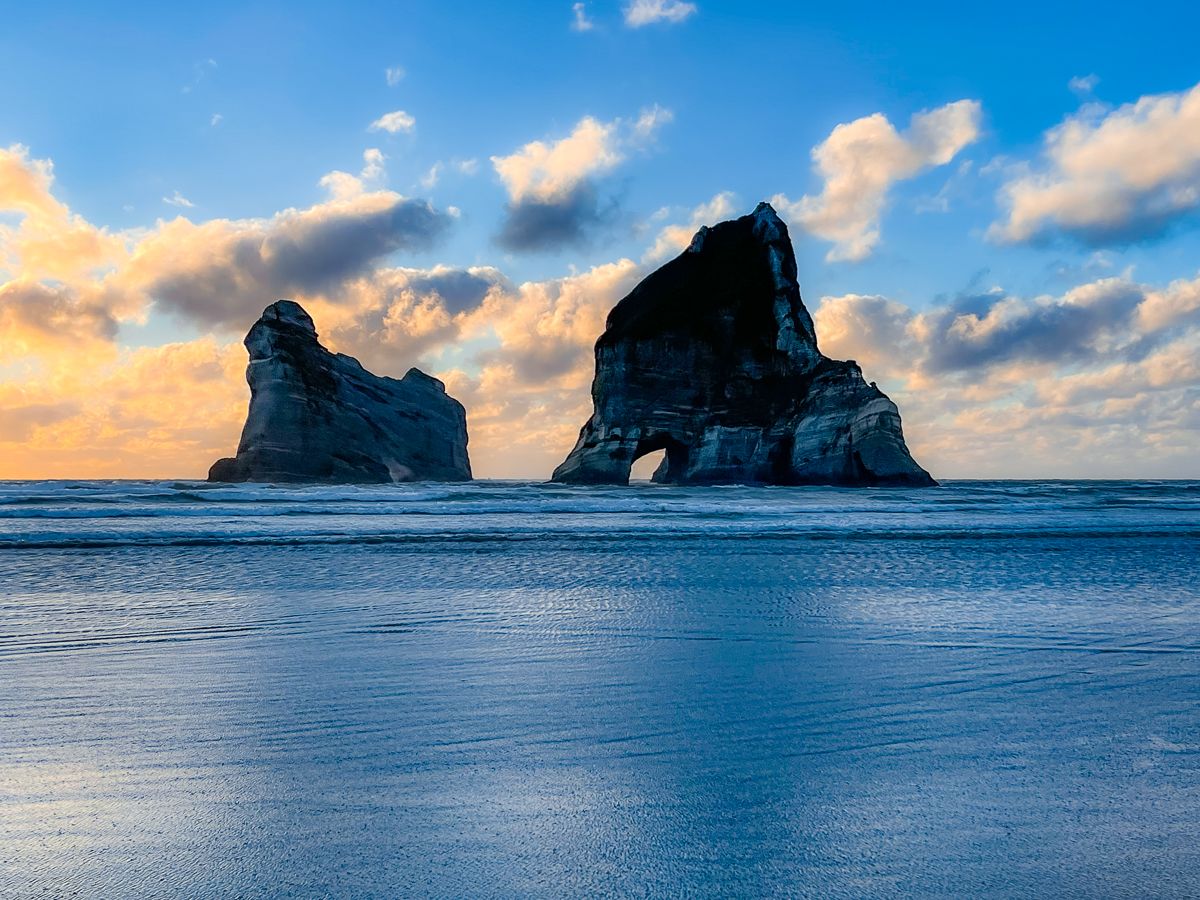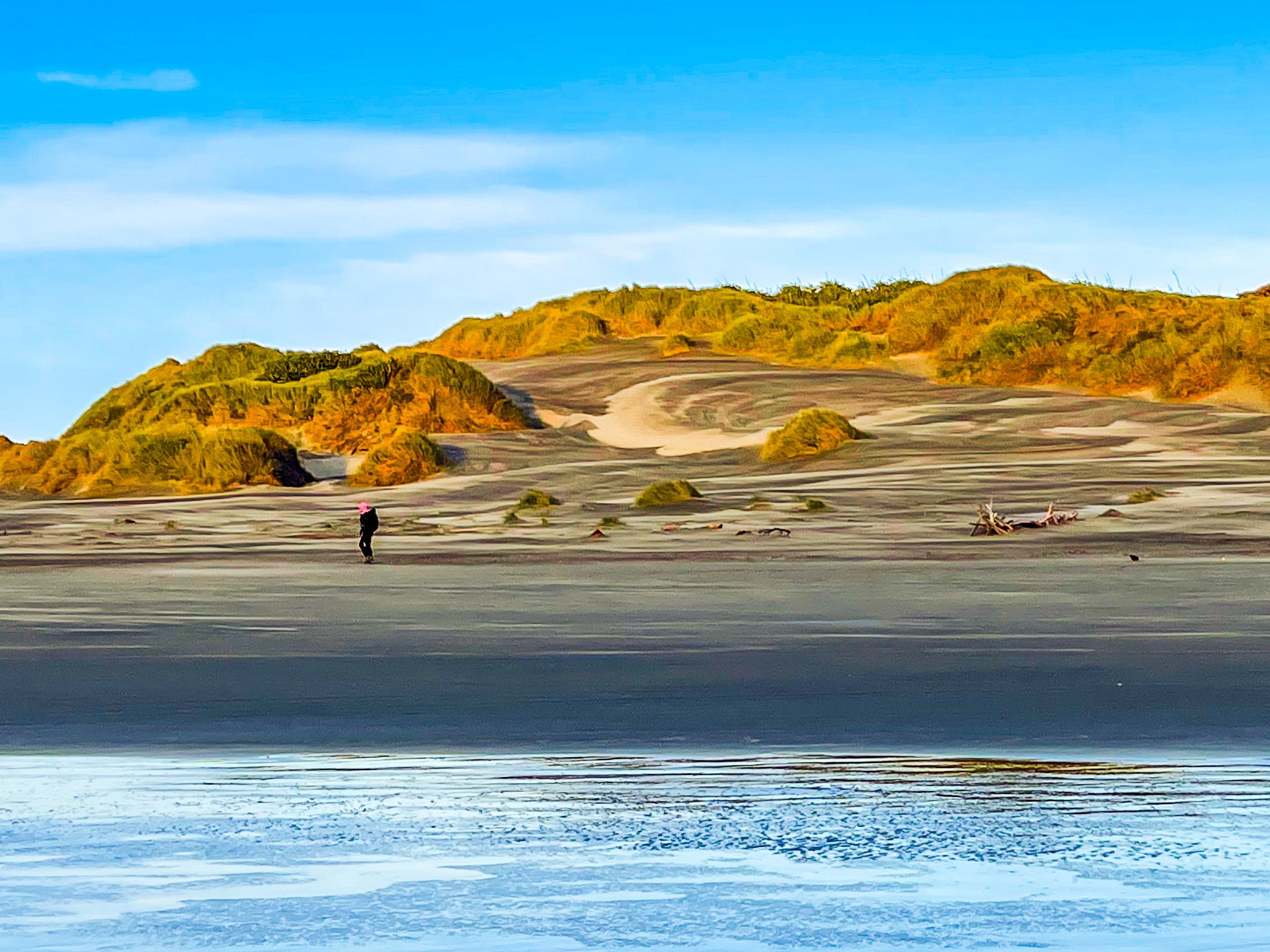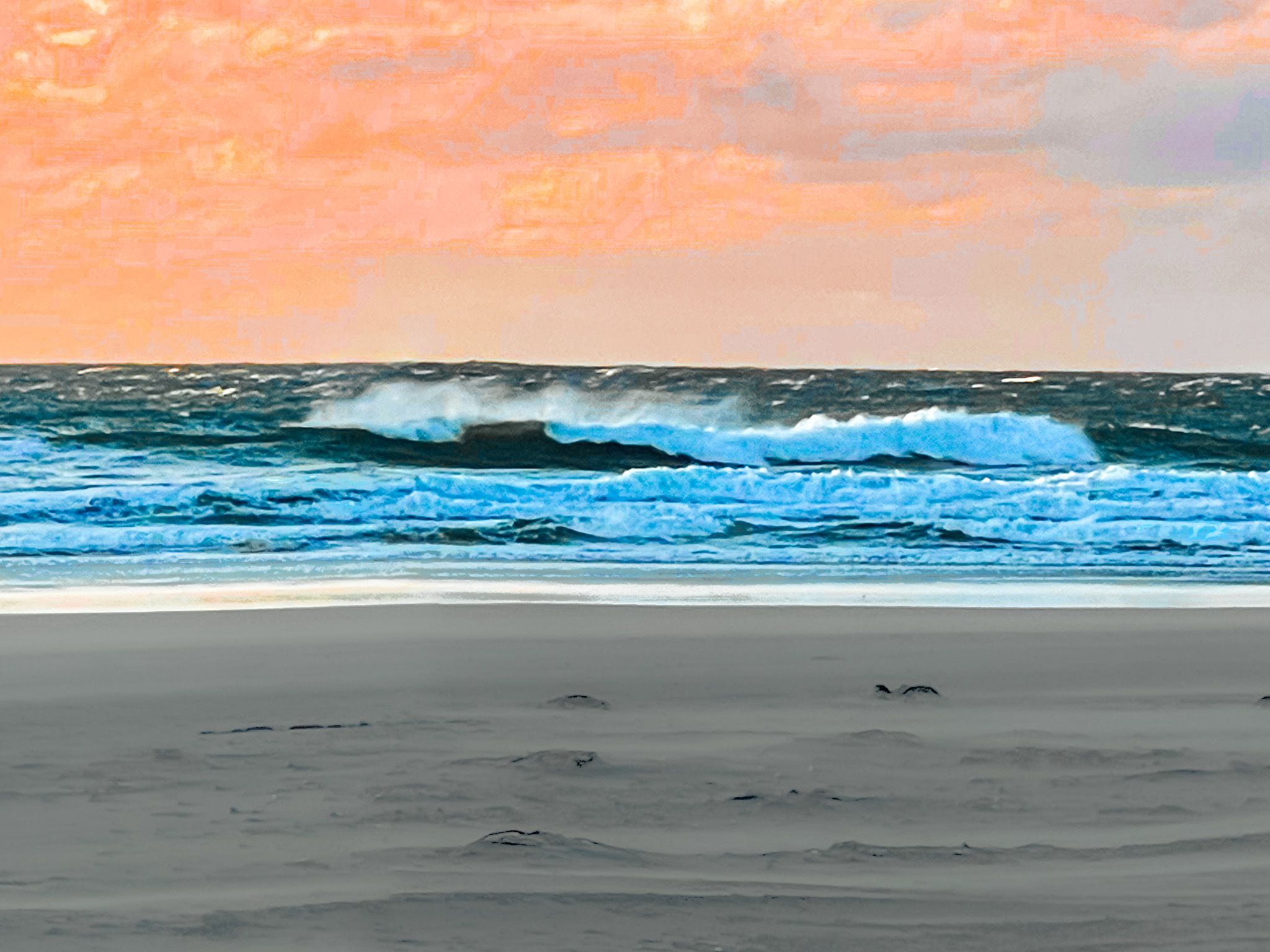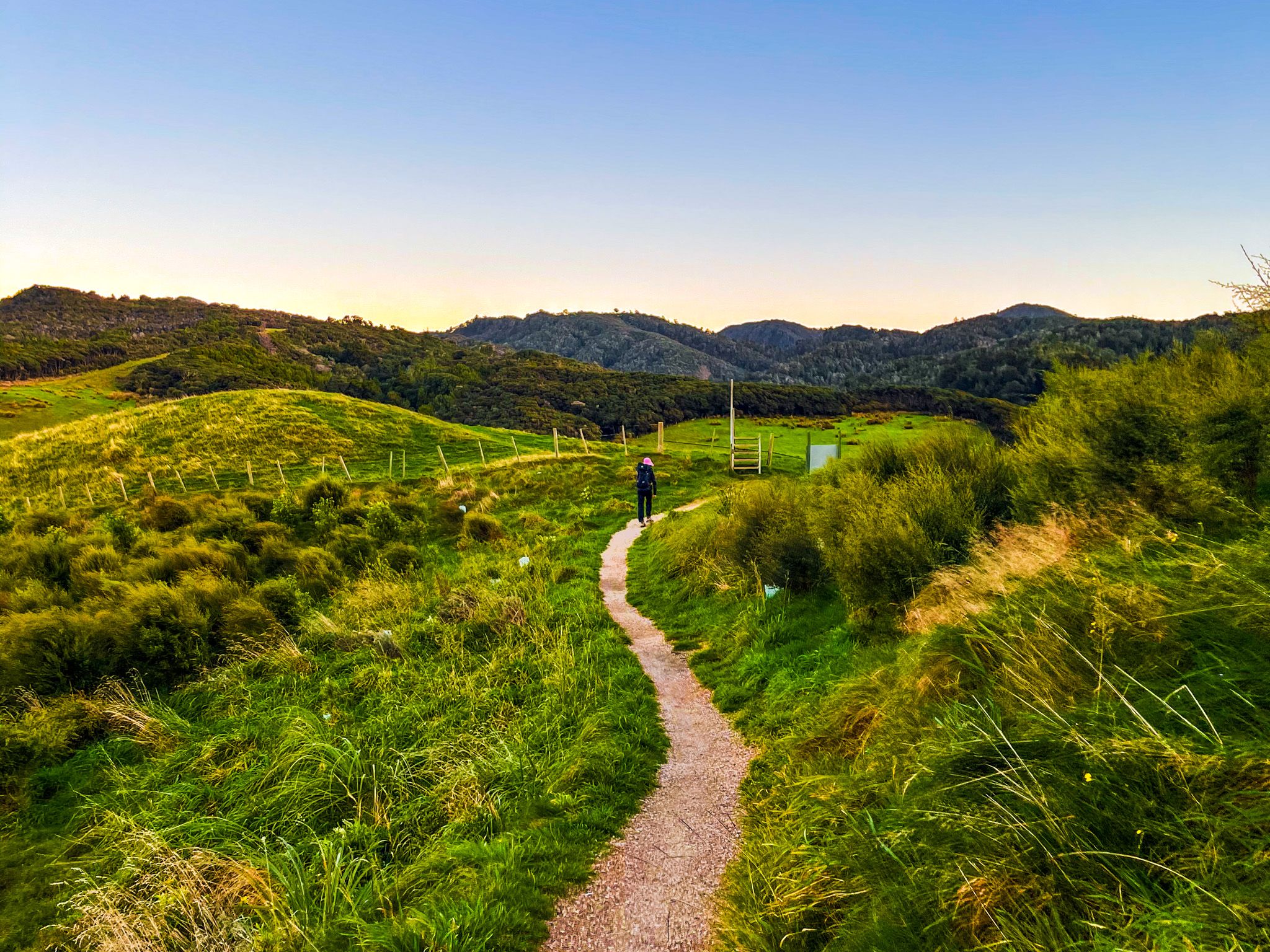Wharariki Beach: A Wind-Sculpted Masterpiece
Tucked away at the remote north-western tip of New Zealand’s South Island in Golden Bay, Wharariki Beach unfolds like a panorama of raw beauty. Beyond the farm track and sand dunes lies a broad, wind-scoured sweep of coastline dominated by towering rock arches, cavernous sand-blasted caves, a bustling seal nursery, and dunes that rise like sculpted waves behind the beach. In every direction, you feel the power of the Tasman Sea.
Walking to the Beach
Two walking tracks provide access to the beach. The shorter, steeper Wharariki Beach Track climbs over rolling hills directly to the shoreline and provides the fastest and most dramatic approach, delivering you to the best view on the iconic Archway Islands in 30 minutes. In the cliffs behind you as you view the islands, there are sea caves and fossilised shells.
The longer route follows a farm track past a small lake, with views of regenerating native forest and the islands in the distance. After about 2 km, a side track descends beside a natural bridge, with arches and sea caves nearby. This rocky area is ideal for exploration as the tide recedes. The full loop, returning via the beach, takes approximately 2.5 hours plus time to explore the seal nursery.
The Archway Islands
Standing just offshore are the Archway Islands: four rugged sea stacks carved by wind and wave that were only officially named in the 2010s. The largest rises to 66 metres and contains two natural arches; a smaller adjacent island has a third arch. Depending on where you stand on the beach and the tide level, these formations offer ever-shifting silhouettes, making them a magnet for photographers. But the prime spot is a location where you can see both arches on the lion-shaped island. To see the third arch on the smaller island, you need to be further down the beach to the southwest.
Formed from sedimentary rock, the islands have been sculpted over millennia by the Tasman Sea. Wave erosion exploits natural weaknesses in the rock, gradually forming tunnels that widen into arches before collapsing over time. Their scale and drama place them among New Zealand’s most recognisable coastal features.
Other Caves, Arches & Rock Formations
Beyond the Archway Islands, Wharariki Beach is ringed by geological marvels. A feature of the southwestern end is a walk-through tunnel that pierces a huge conical-shaped rock (accessible at low tide). Look to the far point ot the west to see another big natural arch! Plus, there are more caves to discover.
The cliffs and caves here are shaped from ancient sandstones and mudstones, relatively soft rock types that yield quickly to coastal forces. Combined with strong prevailing westerlies and high-energy surf, these processes create a dynamic, ever-changing shoreline.
Sand Dunes, Cliffs & Open Horizons
The journey to the beach is as striking as the beach itself. Puponga Farm Park’s steep rolling hills open suddenly into a dune system sculpted by constant wind. These dunes provide elevated viewpoints over the beach and are etched with wind-rippled patterns. Cliffs at either end of the beach create a natural amphitheatre, connected by broad sandflats, even at high tide.
The Wharariki stream is at the eastern end of the beach and winds its way through the dunes to the sea, creating reflections that shift with the light. Early morning or late afternoon visits offer the most dramatic light, especially for photographers.
Seal Pups and Coastal Wildlife
Wharariki Beach is home to a New Zealand kekeno (fur-seal) nursery. During summer and autumn, you can often see pups playing in the tidal pools at the eastern end of the beach. Their playful antics are one of the most memorable experiences in Golden Bay.
Maintain a respectful distance and avoid disturbing the animals. The seals are wild and can be aggressive if approached.
Walks and the Puponga Farm Park Network
All tracks at Wharariki are part of Puponga Farm Park, a working farm and conservation area that forms the western end of the Cape Farewell to Farewell Spit walkway network. Beyond the two tracks to the beach, walkers can link into the rugged Puponga Hilltop Track, which connects to Fossil Point and Ocean Beach, then Farewell Spit.
This network allows you to craft a longer loop or extended walk: ascend from the beach to ridge lines overlooking the Tasman, or return via inland tracks to the car park.
What to Know Before You Go
Tide timing is essential, as low tide reveals caves, rock pools, and the best seal-watching spots. Swimming is strongly discouraged due to rips and waves.
How to Get There
From Tākaka, drive north through Golden Bay on State Highway 60 to Collingwood. From there, the coastal road continues as Collingwood Puponga Main Road to the small settlement of Pūponga. Follow the unsealed Wharariki Road to its end at the car park within Puponga Farm Park. There is a modest commercial campground next to the car park.
Another remote adventure in Golden Bay is to explore the Whanganui Inlet and the remote rugged coast on Cowin Road between the Paturau River and Anatori, or even further south to the Turimawiwi River.
